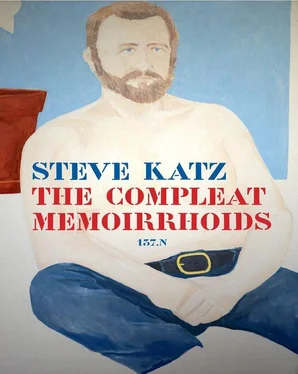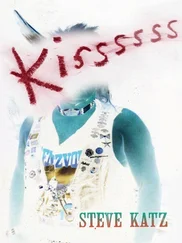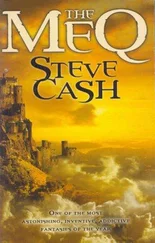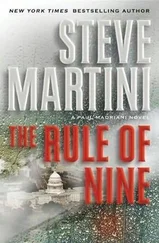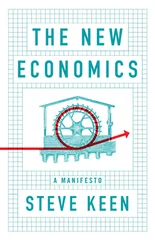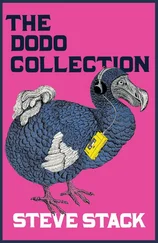“You can come with me to my house, yes,” says the man in the brown robe.
I look at my two American friends. “We’re here to watch the performance,” I explain.
“Oh, don’t worry about that. The dancers will be here all night. I will take you to my house. Here people come and go.”
The three of us look at each other. “You come, yes, to my house,” the man insists. We shrug and stand up. It’s not that we aren’t curious. The performance is slowly progressing. All five wives pose and dance in unison, their facial expressions sweetly feminine. The man of the American couple is tall, and standing next to him our Indian friend, who seems substantial when we are sitting down, appears tiny.
We follow our host out of the buoyant light of the performance space and into the heavy darkness down the street. I try to memorize the route so we are sure to find our way back. There are too many turns. The darkness is ominous. The way seems more illuminated to our host, who shouts at his neighbors as he struts by with us in tow. He is, as far as I can gather, bragging to them about taking these Americans to visit his home. We pause at his doorway. He shouts something through the door, and when it finally opens his wife and another woman stand grinning in a dim yellow light. He doesn’t introduce us to the women, leads us into his parlor, proudly pointing at the T-V, gray and white, with a persistent forward roll, and a distinct crackle every time the musician hits the strings of his veena. He sits us down on some stools, facing the screen. The room smells, as much of the neighborhood does, of curry and excrement. “Television,” says our host, very proud.
“The death of Kathakali,” I think.
“Very good, television,” he says.
His wife and the other woman bring in trays of tea and sweets. The tea is milky and tepid. I don’t dare taste it. I bite into a sweet lump, gummy as Turkish Delight. It sticks to my palate and the back of my teeth. The three of them stand in the doorway of the parlor content to watch us sip, eat, and watch the television, very good. The point seems to be having us there, and watching us. There is no attempt at conversation. I feel pressured by the hospitality, but resist sipping the tea. My companions don’t, however, and each of them swallows a few sips.
Our host guides us part of the way back, and points us towards the Kathakali light above the gloom of the streets. He goes back to his television, very good. We settle down to watch the performance, very very good. After less than an hour my friends stand up. The tea has quickly done its damage. They look pale and greenish. I don’t want them to leave me there as the lone tourist, but they stagger off to a pedal cab waiting on the road. I am glad I resisted the tea. I hope they’re okay. Just a few of the townspeople are left as an audience, the rest are probably gone to their televisions, very good. Our little Dalit boy is asleep close to the stage. I watch the performance until I fall asleep, and then wake up as dawn is cracking. The performance has wound down to one narrator. Only a couple of people remain in the audience, one of them asleep, the other eating rice out of a tin pail. The boy still sleeps. I stand up, and feel I should say goodbye to the performers, as if some kind of formality can help me exit the experience. I say nothing. My plane leaves that afternoon. I wake up a pedal cab driver to take me to the wharf. It’s too early for the ferry to Bolghatty Island so I hire a water taxi. “Take me to Jewtown first,” I tell the driver. I just wanted to hear myself say that, “Take me to Jewtown.”
To get to Cochin from Madras we take an India Airlines flight. A few days later we hear that the same plane has crashed. A patron of Phil’s arranged a private performance for us of Kathakali Dance at their school in Cheruthuruthy. We have reserved cabins at the Bolghatty Palace Hotel in Cochin. The hotel and cabins are on an island that serves as a public park and game preserve in the Ernakulum district of the city. Cochin, like Venice, Suzhou, Stockholm, Amsterdam, is situated on water, and you get around much of it by boat. Along the shores of the many islands, and up the web of estuaries, wide fishing nets arch over the water, attached to long poles. If you are in a boat on one of the estuaries often a fisherman will pull up beside you to show off a prawn as long as your forearm. You can’t call them shrimps any more. From the Bolghatty Island you take a small ferry into Ernakulum, or Cochin City. In the morning a little door lifts from under the bench, and the boat’s beggar slithers out. He’s a cheerful guy, with a dark, handsome face. He pulls himself around on his arm stumps, a beggar’s cup in his teeth, and greets everyone. Occasionally he lays the cup on a bench, and yaks with the boat crew. Until the ferry shuts down at midnight he works the crowds, then he crawls back under the bench to sleep.
We hire two cars and drivers to take us to Cheruthuruthy. Since Phil is received as a patron we get to go behind the scenes to watch the dancers put on their make-up. Each dancer does his own. It’s a time-consuming, elaborate ritual. The result is precise and colorful, specific to character. Performances start around 10 P.M. on an outdoor stage, after the heat of the day has dissipated. They go until four or five in the morning, performing stories from the Mahabharata or Bhagavad Gita. Though the troupe is traditionally all male, with males in drag dancing the female roles, at the time we are there three young French dancers, one of them a woman, are studying at the school. After three years of study, the young woman is allowed to play bit parts. Kathakali dance is very subtle and very precise. Most of the movement is in the face and hands. The dancers train for many years to isolate facial muscles and to move them independently, coordinated with the music and story line. At the same time they tell the story with complicated mudhras (hand positions). The “private” performance means that Phil and his friends get to sit close to the stage on folding chairs. By the time the performance begins a throng of local people has gathered on the grass all around us.
Two dancers step into the light, and between themselves extend and hold high a rippling cloth that makes a curtain. Light plays off the cloth. A small consort of musicians enters and sounds a kind of overture, while dancers tease the audience from behind the curtain, peeking around it, lifting the cloth with a bare foot, showing a hand, the top of a head. A singer begins to tell the story about to be enacted, singing in the liquid syllables of Malayalam. None of us understands a word. The rest of the audience already knows the story. Once the dancers break through the curtain and start to tell it in posture, hand gesture, and controlled facial twitch, the narrative begins to reveal itself and slowly make sense. As the performance winds into the early morning, each of us occasionally dozes off, and that seems to be part of the drill. You startle awake into the midst of the thrall of this powerful theatrical experience. The music, the poses, the mudhras, the make-up, the ingenious uses of the curtain, the precision and training of the dancers, the repetitions and increments of the story, all combine to awaken in your marrow that core of wonder that great theater evokes.
The Jaguar’s tongue rasped across my face. I woke up but never saw the big cat. By the time I was conscious enough to open my eyes it was gone. Whether this was the same beast I thought I’d seen at the window of the bunkhouse is an open question. I call it Jaguar because as a child I’d read all the Bomba the Jungle Boy series and Bomba always dealt with the mysterious Jaguar. As far as we know there are no Jaguars in the Rockies. I couldn’t call it a lion and diminish the African lion’s great size nor misrepresent my Jaguar, who is solitary and doesn’t lie around as king of the jungle, snoring in his pride, living off a work force of lionesses. Panther, too, seemed inappropriate, since Pinkie, the camp cook, was the one I took to be the big cat I’d seen the other night in the bunkhouse window. Pinkie Panther, no way. Puma is a brand of athletic gear. Okay, Jaguar is an overpriced and unreliable British luxury car, but I still think of Bomba with affection.
Читать дальше
